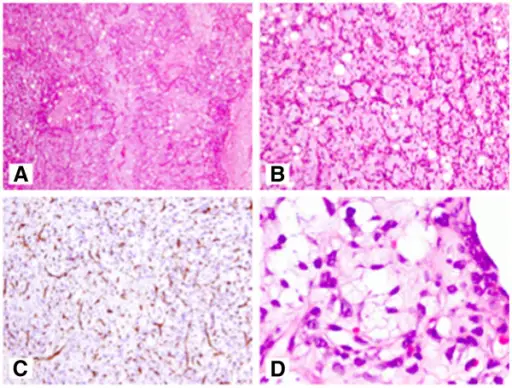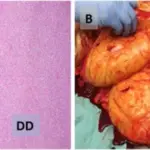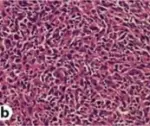Myxoid liposarcoma is a malignant tumor made of primitive non-lipogenic mesenchymal cells.
What is the Pathology of Myxoid Liposarcoma?
The pathology of myxoid liposarcoma is:
-Etiology: The cause of myxoid liposarcoma is not well-established but trauma has been implicated in some cases.
-Genes involved: FUS-DDIT3, EWSR1-DDIT3.
-Pathogenesis: The sequence of events that lead to myxoid liposarcoma are reciprocal translocations between chromosomes 12 and 16 which cause the fusion of genes DDIT3 and FUS which activate downstream PPARgamma2 and C/EBPalpha. This promotes the proliferation of malignant cells.
-Histology: The histology associated with myxoid Liposarcoma shows a chicken-wire pattern and atypical adipocytes.
How does a Myxoid Liposarcoma Present?
Myxoid liposarcoma usually affects older males. The symptoms, features, and clinical findings associated with myxoid liposarcoma typically include feeling a deep mass with mild aching pain.
How is Myxoid Liposarcoma Diagnosed?
Myxoid liposarcoma is diagnosed by physical exam and biopsy.
How is Myxoid Liposarcoma Treated?
Myxoid liposarcoma is treated by wide surgical resection. Certain patients may benefit from adjuvant radiotherapy or chemotherapy. Amputation may be necessary for unresectable tumors.
What is the Prognosis of Myxoid Liposarcoma?
The prognosis of liposarcoma is generally poor. There is a high risk of local recurrence.



